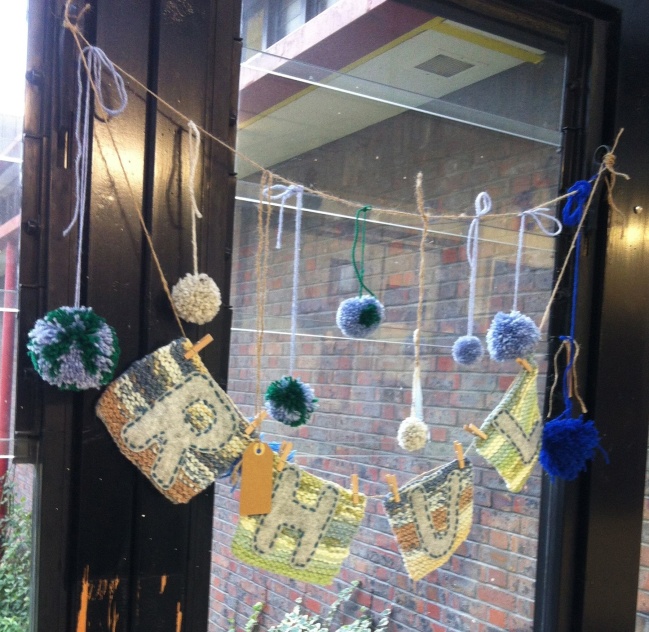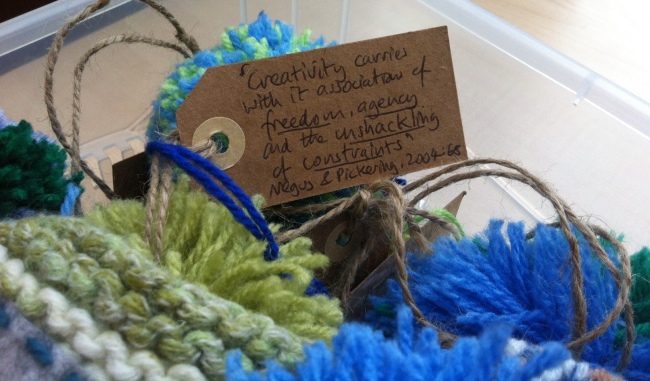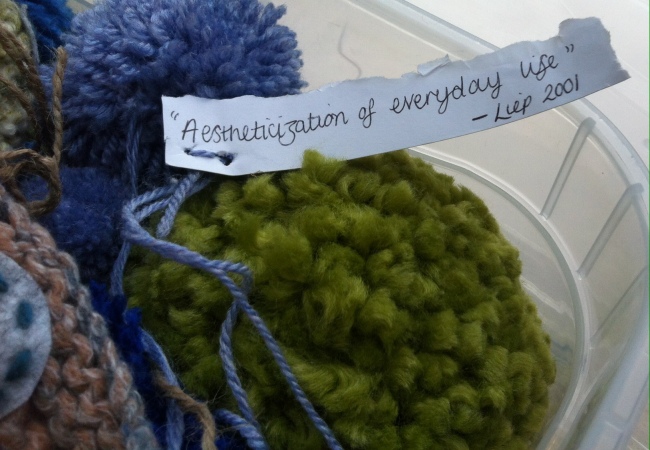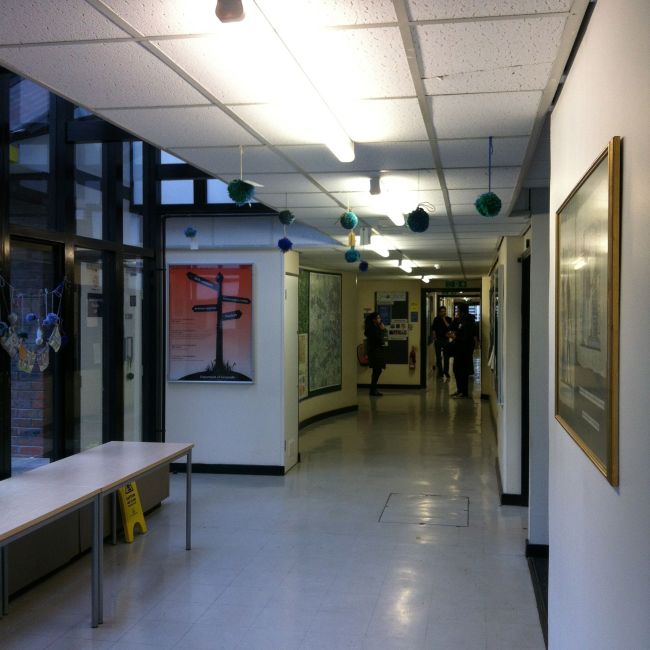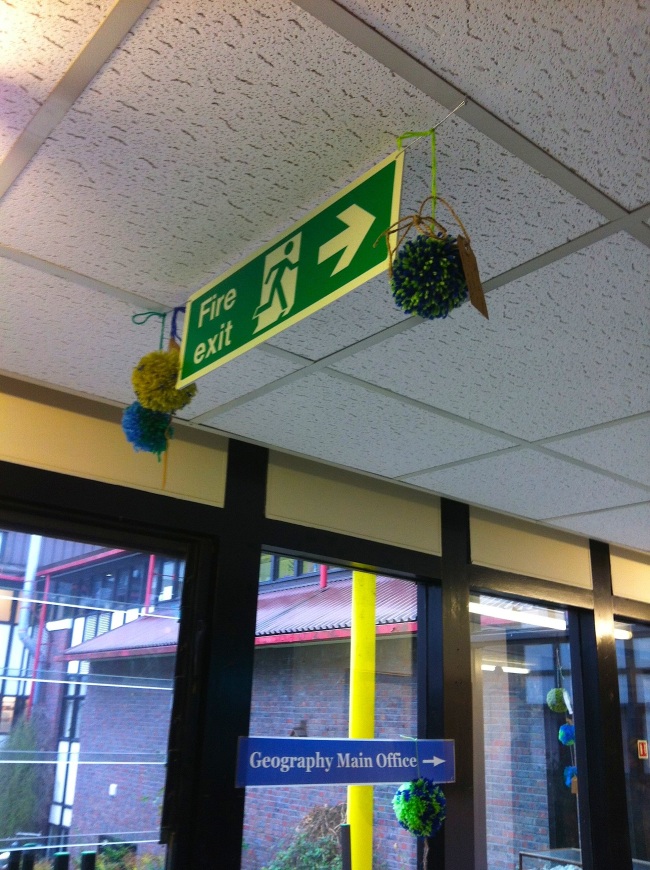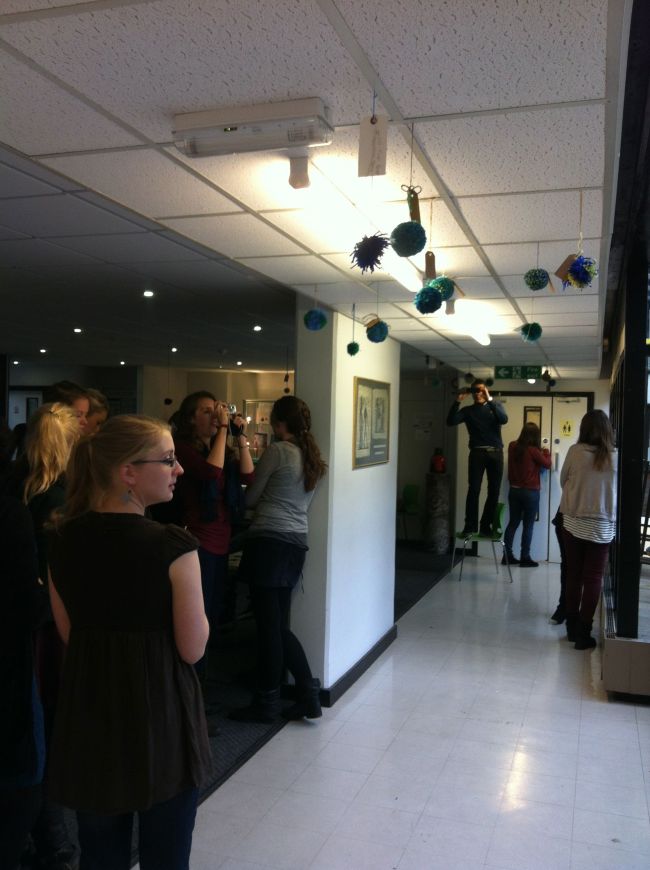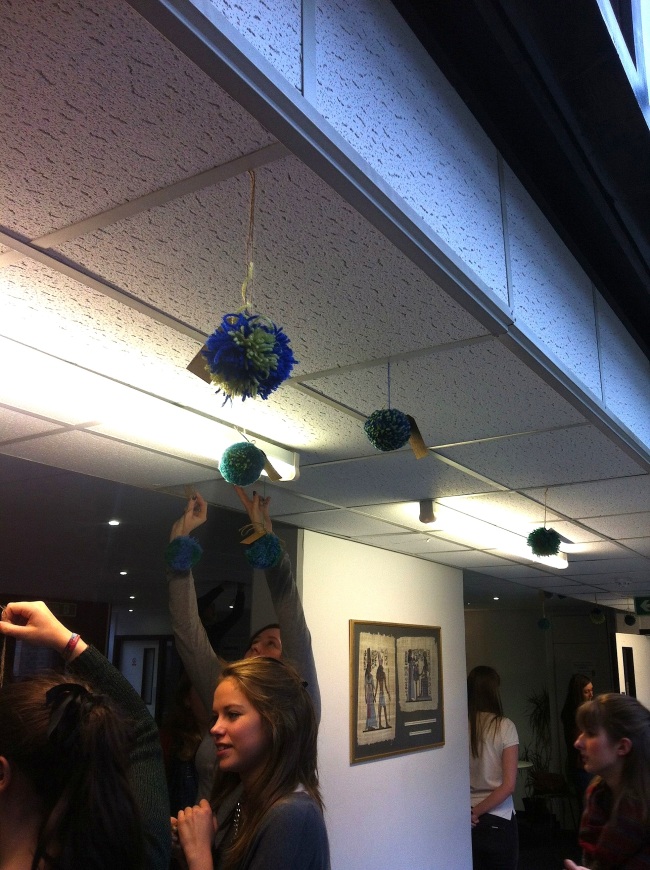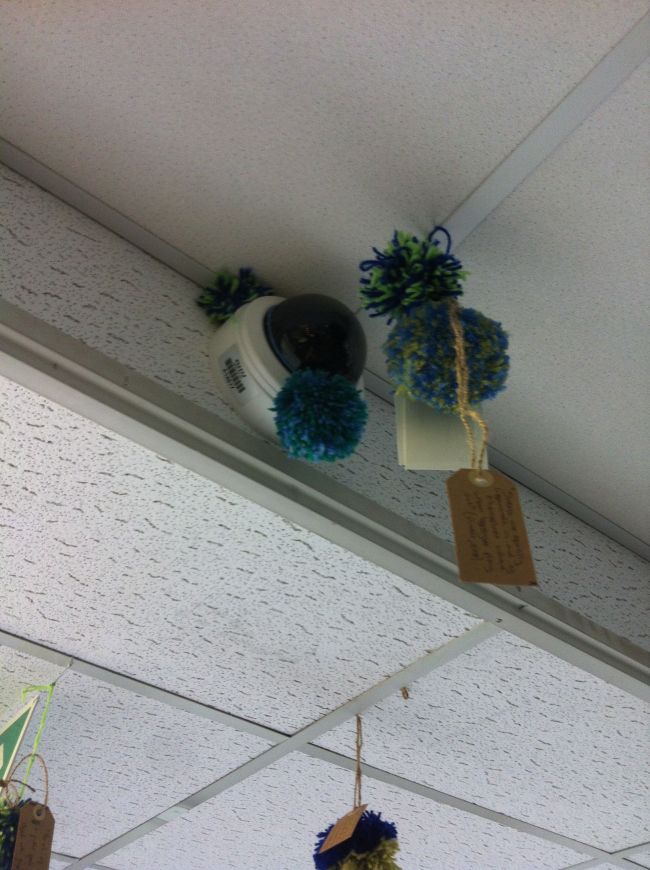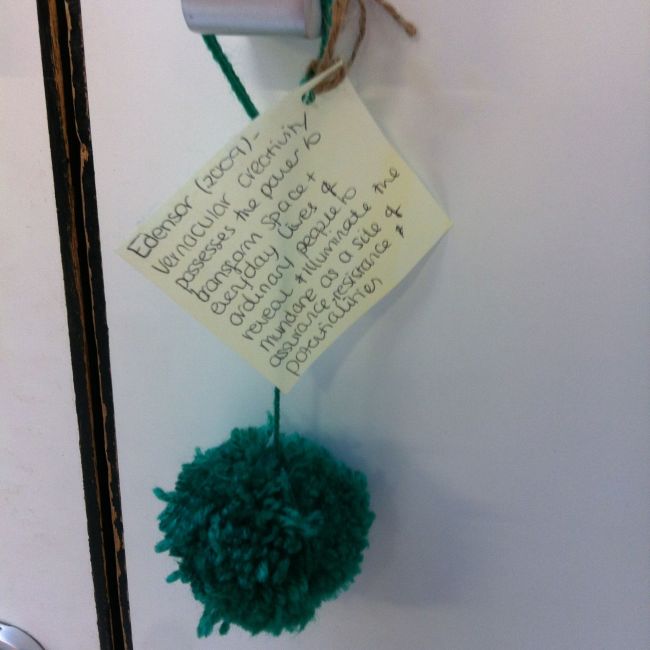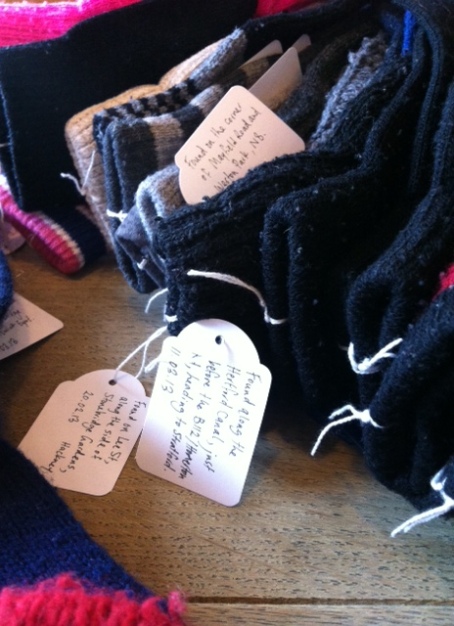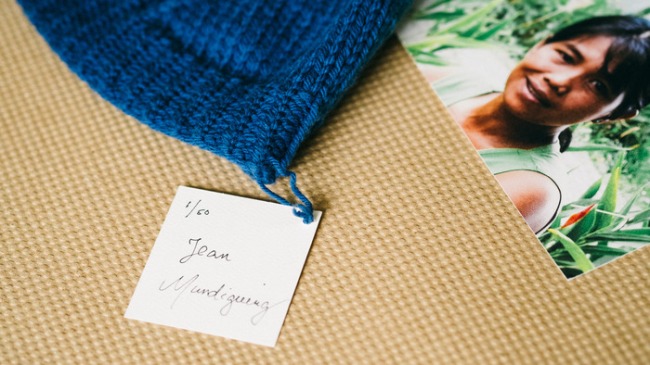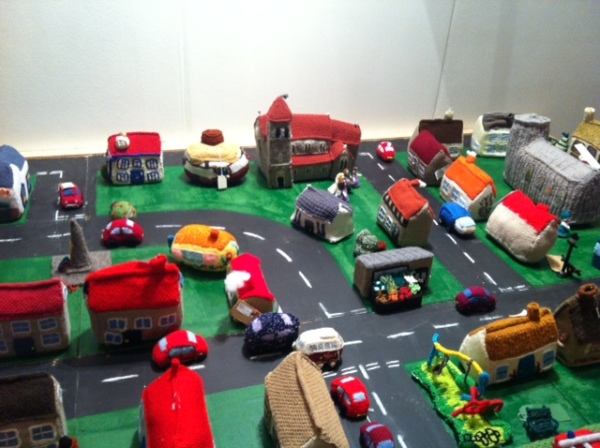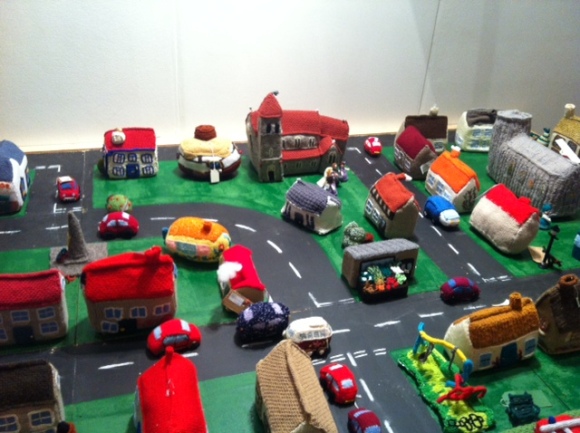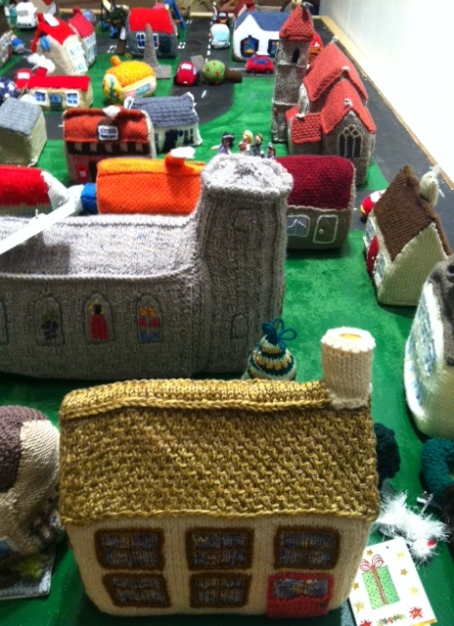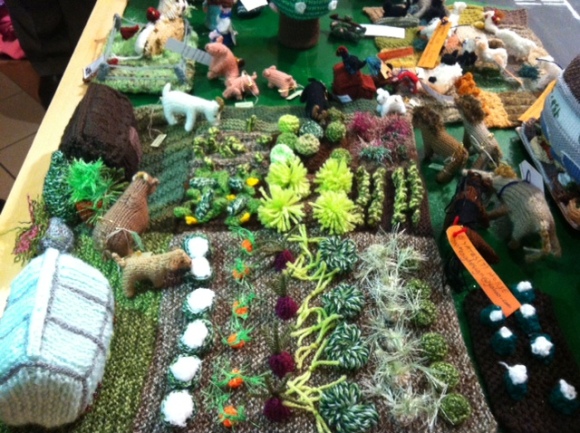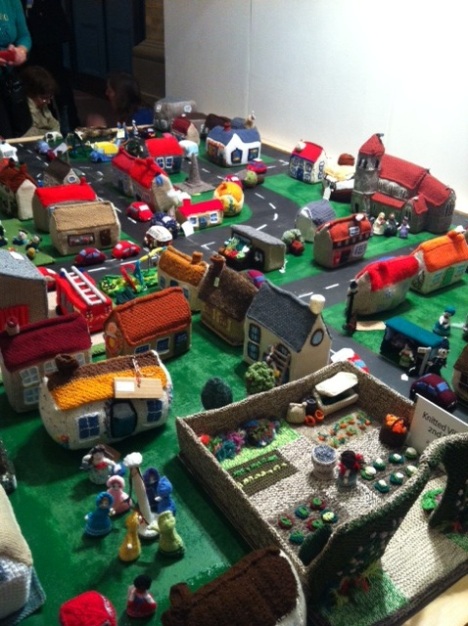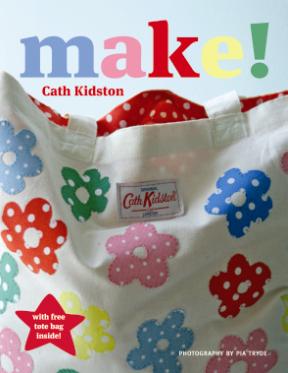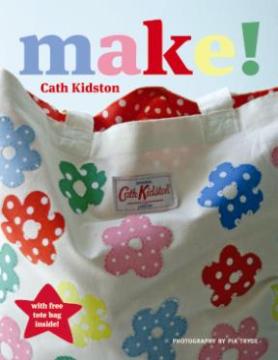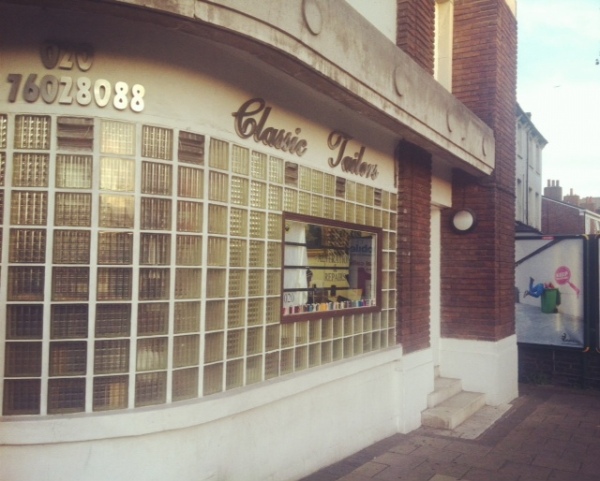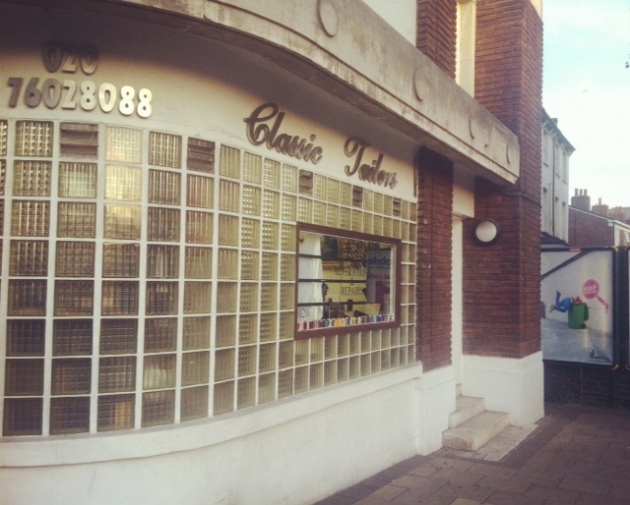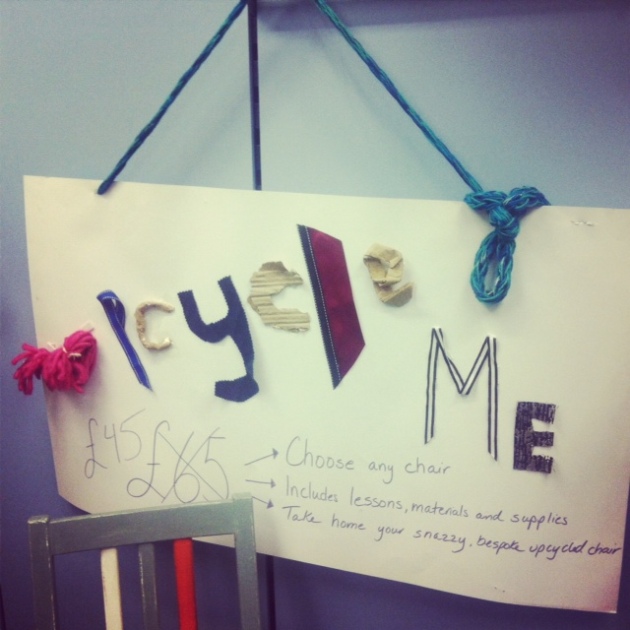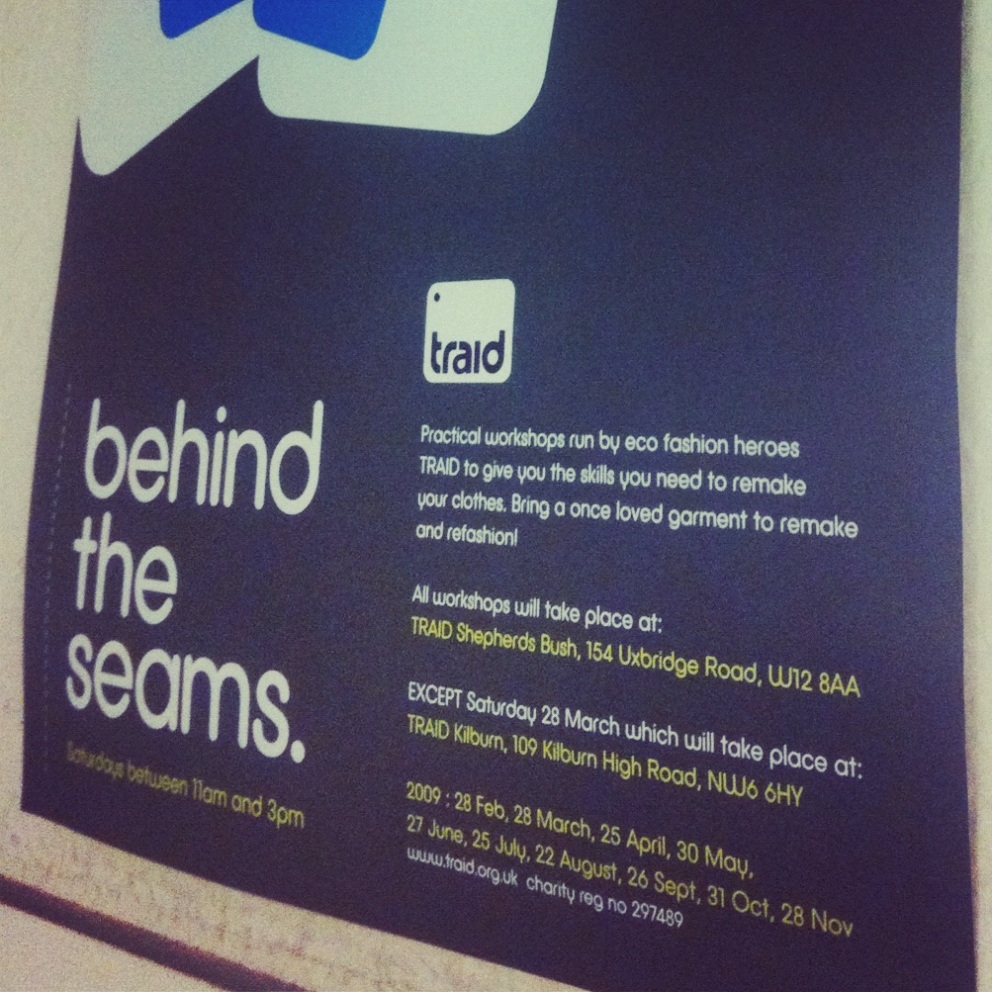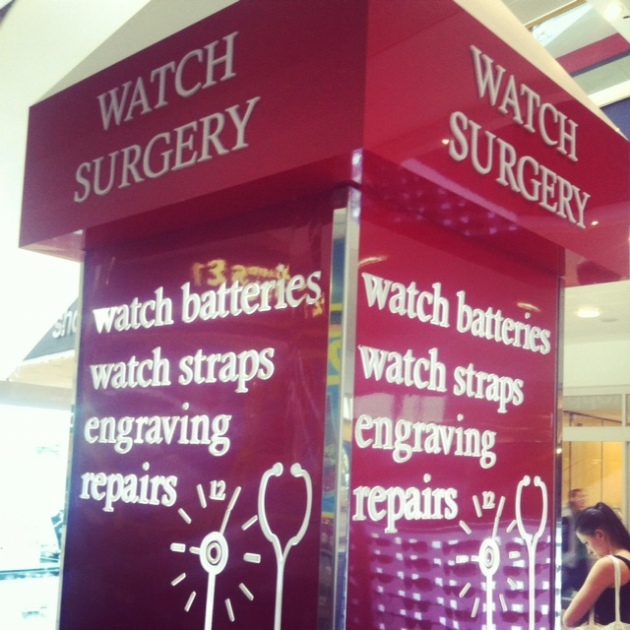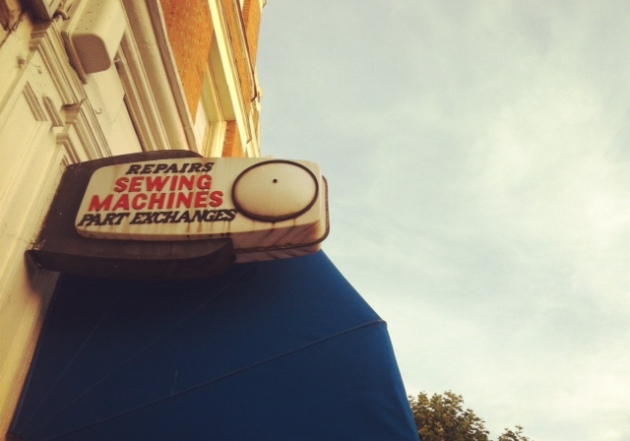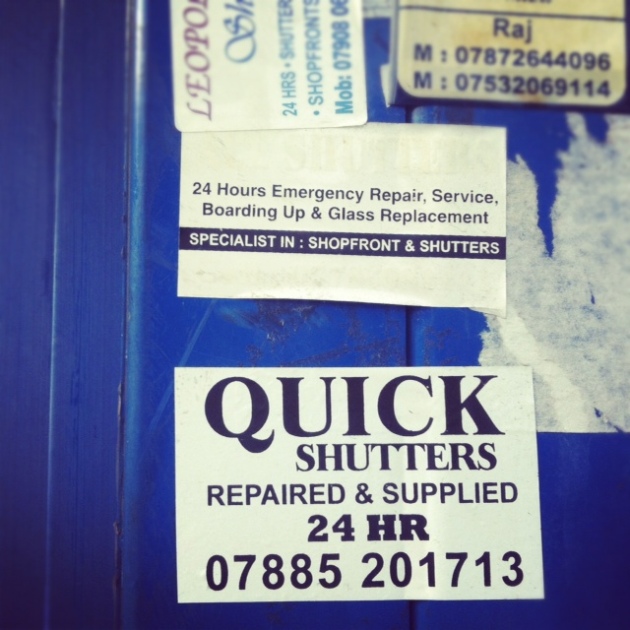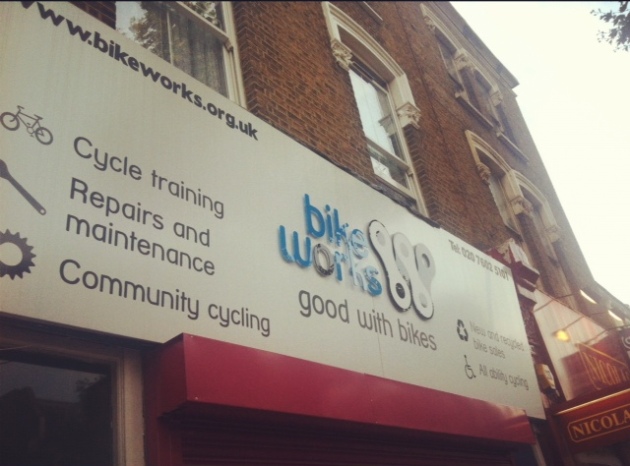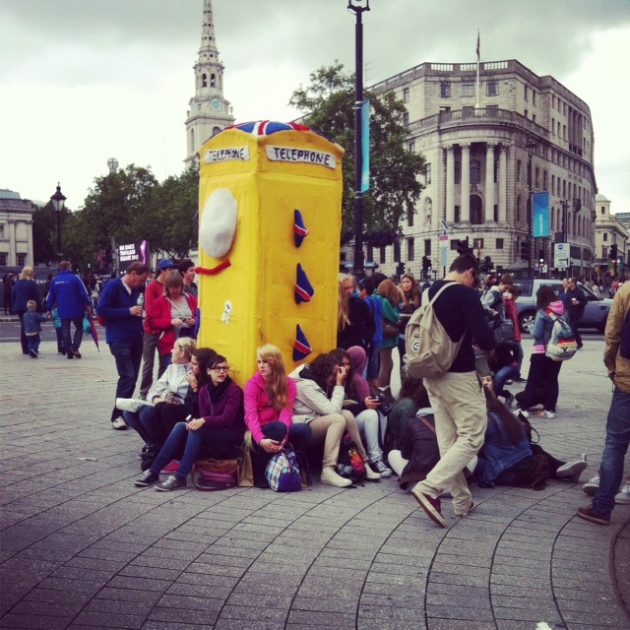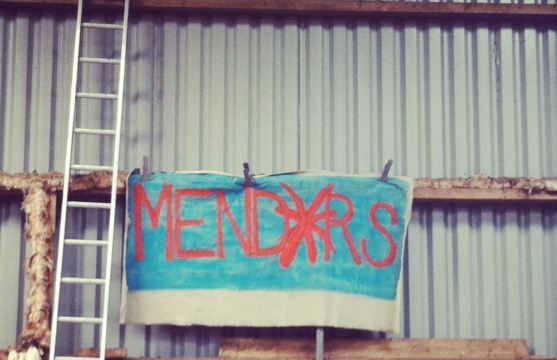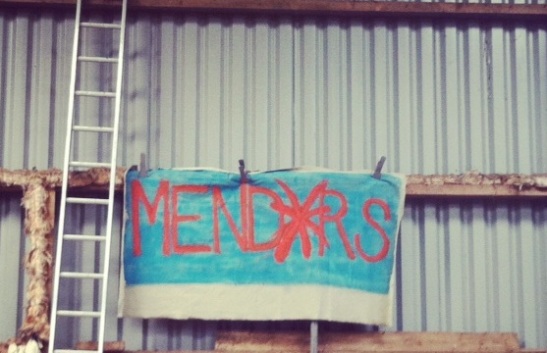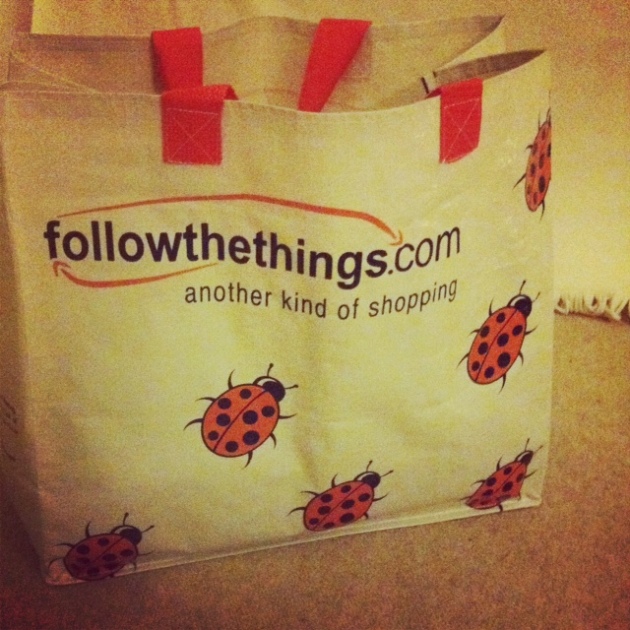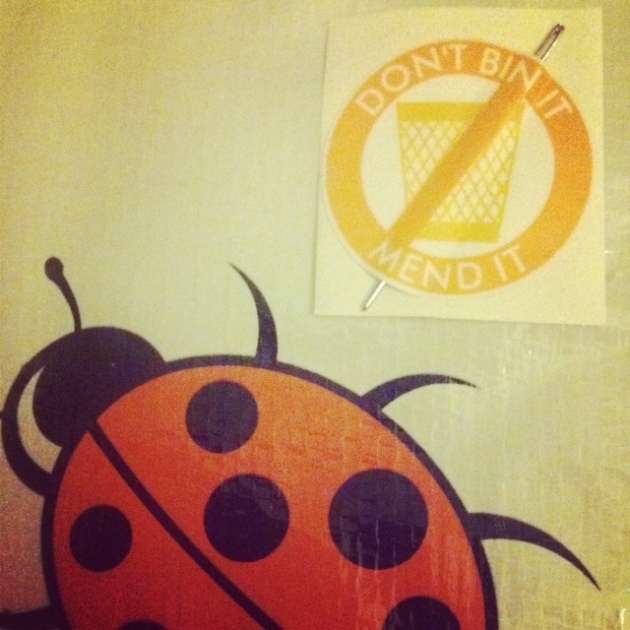The past two years I’ve been lucky enough to guest lecture in Harriet Hawkins’ third year lecture course ‘Geographies of Creativity’. The course explores the theoretical, political, social and economic importance of creativity and its critical geographies. In my lecture I introduce yarnbombing and ways that knitting has been used as a form of urban intervention, or critical spatial practice. During the course Harriet and the third year students spend time discussing vernacular creativities and engaging with David Gauntlett’s work on ‘Making is Connecting’. Building upon this I thought it would be fun to experiment with my lecture format and explore the potential for ‘making connections’ through making. With Harriet’s encouragement, it was decided we would yarnbomb our beloved Geography Department! The aim would be to give students an opportunity to try new skills and think critically about urban subversions and questions of materiality, skill, aesthetics, participation, affectivity, sensory experience etc.
Given what little knowledge I had of students existing skills and knitterly knowledge – I thought it would be more democratic and accessible for students to make pom-poms (with option to knit/crochet something of their choice f they would like to). These pom-poms would be globe themed (blue and green yarn) and attached to these would be a swing tag featuring a quote from their readings/engagements with literature and theories on ‘creativity’. I put together 45 ‘pom-pom making kits’ that included yarn, jute string and a swing tag. I asked that the students researched ‘how to make a pom-pom’ themselves – to engage with crafts is to engage with dilemmas on how we learn, preserve and practice skill. As I mentioned students had enjoyed engaging with David Gauntlett’s work on YouTube and Web 2.0. Although I must admit, that following pilot tests with willing PhD students I hinted that certain methods would make more satisfying pom-poms (let’s just say one PhD student’s fingers turned as blue as the wool they were winding too tightly around their fingers in said making activity!)
Leaving the pom-pom kits at Harriet’s office for collection, I was excited and anxious to meet with the students, and check out their pom-pom making efforts. I put together some super quick bunting to contribute to the yarnbomb but I really wanted this to be about the student’s efforts and about disrupting sit back and learning with making and doing. I was not disappointed! Almost every student had made a pom-pom, and not only that – they were big, fluffy, and globe-like and students had really enjoyed making them. Some had gotten together to make their pom-poms collectively; some had asked their family and friends for help and contributed pom-poms with yarn from their own stash! I was impressed with the level of improvisation evident too – some students had lost the swing tag for their pom-pom so had fashioned new ones from post-it notes and paper. Attached to most pom-poms was a quote from geographical literature, popular culture or otherwise reflecting on creativity.
During the lecture we discussed ways that “critical urban interventions and spatial practices are based on the refusal to accept current conditions as inevitable and natural. Through imaginative means, they explore possibilities and enter the register of as if: ‘as if I were another, as if things could be otherwise” (Pinder, 2008, 734) – reflecting on urban materialities, socialities and embodied experience in cities. We engaged with the ‘sensibilities’ of various subversions and interventions to arrive at how and why yarnbombing was different and important as a critical spatial practice. I encouraged students to make decisions on where to yarnbomb – we chose the foyer of Queen’s Building. Being the ‘reception’ area and face of the building this was an important space which encouraged interaction but also had ‘forgotten about’ nooks and crannies that could be home to the pom-poms (and the pom-poms would serve to highlight these too).
We left the lecture room to let our pom-poms into the wild! Some students didn’t want to let them go, they’d spent so much time and effort making them – ‘would they be okay in the foyer? Can we get them back tonight?’ This highlighted the labour of skill, love and time that goes into yarnbombing and the idea that it’s a form of ‘gifting’ to environments and inhabitants (Butcher, 2013). It highlighted the ephemerality of yarnbombing – we could easily add these pom-poms without causing destruction – but they could be easily taken away too. The majority of students decided that the ceiling would be a good place to hang the pom-poms down from. The ceiling is made up of plasterboard panels – familiar to schools, universities, and offices alike. The students figured they could lift up the panels, and hang the pom-poms from them ‘like Christmas decorations’. I decided to hang my bunting on the window, and happily some students chose to hang their pom-poms their too. Some students wanted to be ‘more political’ with their pom-pom placement – some chose to hang their pom-poms next to the CCTV camera. Others chose to yarnbomb the door that leads to Earth Sciences – the boundary between departments.
Overall, I think team #creativegeogs did a great job – “making things show us that we are powerful, creative agents – people who can really do things, things that other people can see, learn from, and enjoy” (Gauntlett, 2011 p.245). The activity raised important discussion and debate on what counts as political and politics – how might a politics of ‘knitting’ as an urban subversion be different? We discussed private/public boundaries, gender, aesthetics, playfulness, materiality, craftivism, Betsy Greer and Rozsika Parker. I think the students appreciated the skill of yarnbombing and knitting much more. In the excitement of yarnbombing and the overrunning of my lecture we didn’t get round to giving ourselves a yarnbombing collective name. In the end, the pom-poms were quite anonymous and perplexing to those frequenting Queen’s Building. I quite liked this though – the idea of it being surprising, confusing, perhaps enchanting! People stopped to take pictures and read the swing tags. I heard reports of confused friends texting Geographers for answers. It caused bewilderment during a physical geography conference held in the department. I also overheard one report of an earth scientist “feeling destructive, like they just wanted to pull it all down!” Unfortunately that’s what I did a few weeks later – with help from some of the third years I carefully took the yarnbombing down to keep safe despite their protests that, that was totally besides the point – “we should leave it there, and see what happens to it”. I’m not sure people knew what to do about the yarnbombing – it defies (and changes) ideas and expectations about ‘graffiti’ and that’s pretty interesting.
Weeks later there’s one pom-pom that I genuinely forgot to take down; surviving against all costs on the door of the main lecture theatre – fight the good fight, little one!
Thanks again to the brilliant third years for their hard work and crafty commitment, Harriet, and David Gilbert for supporting and to the custodians of Queen’s Building for hosting our yarnbombing – our pom-pom yarnbomb was a gift to the space we call our geographical home (whether they liked it or not!)
N.B Sincere apologies for the poor photography but hopefully they’re illustrative – they were taken with my iphone and apparently I have very wobbly hands!

